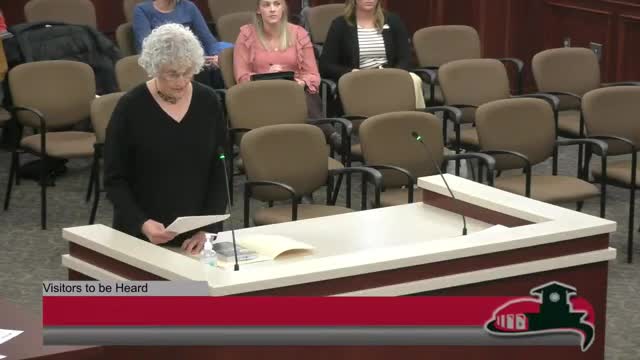Light Pollution Crisis Threatens Health Wildlife and Night Sky
November 05, 2024 | Vermillion , Clay County, South Dakota
This article was created by AI summarizing key points discussed. AI makes mistakes, so for full details and context, please refer to the video of the full meeting. Please report any errors so we can fix them. Report an error »

During a recent city council meeting in Vermillion, concerns about the growing issue of light pollution were brought to the forefront, highlighting its detrimental effects on wildlife, human health, and energy consumption. The speaker emphasized that light pollution disrupts natural ecosystems, particularly affecting migratory birds that rely on moonlight and stars for navigation. The confusion caused by artificial lighting can alter their foraging, nesting, and communication behaviors, posing risks to their survival.
The health implications for humans were also discussed, with exposure to artificial light at night linked to various health issues, including sleep disorders, cancer, and heart disease. The speaker noted that the suppression of melatonin, a hormone crucial for regulating sleep, is exacerbated by exposure to blue-white light, which is prevalent in many urban settings.
Financially, the speaker pointed out that excessive lighting leads to significant waste, estimating global costs between $3 to $7 billion annually, alongside the emission of 21 million tons of carbon dioxide. To combat these issues, the speaker proposed several solutions, including the installation of full shields on streetlights, the use of timers, and a shift to warmer color temperatures of light, which are less harsh and more beneficial for both health and the environment.
The council was urged to reconsider the current lighting strategies, particularly in downtown areas where the intensity of lights approaches that of daylight, contributing to glare and visual impairment. The speaker referenced a 2023 study indicating that North American skies are brightening by 10% each year, warning that if this trend continues, even the brightest constellations may become invisible.
The meeting concluded with a call for action to implement more efficient and environmentally friendly lighting solutions, aiming to preserve both public health and the natural night sky.
The health implications for humans were also discussed, with exposure to artificial light at night linked to various health issues, including sleep disorders, cancer, and heart disease. The speaker noted that the suppression of melatonin, a hormone crucial for regulating sleep, is exacerbated by exposure to blue-white light, which is prevalent in many urban settings.
Financially, the speaker pointed out that excessive lighting leads to significant waste, estimating global costs between $3 to $7 billion annually, alongside the emission of 21 million tons of carbon dioxide. To combat these issues, the speaker proposed several solutions, including the installation of full shields on streetlights, the use of timers, and a shift to warmer color temperatures of light, which are less harsh and more beneficial for both health and the environment.
The council was urged to reconsider the current lighting strategies, particularly in downtown areas where the intensity of lights approaches that of daylight, contributing to glare and visual impairment. The speaker referenced a 2023 study indicating that North American skies are brightening by 10% each year, warning that if this trend continues, even the brightest constellations may become invisible.
The meeting concluded with a call for action to implement more efficient and environmentally friendly lighting solutions, aiming to preserve both public health and the natural night sky.
View full meeting
This article is based on a recent meeting—watch the full video and explore the complete transcript for deeper insights into the discussion.
View full meeting